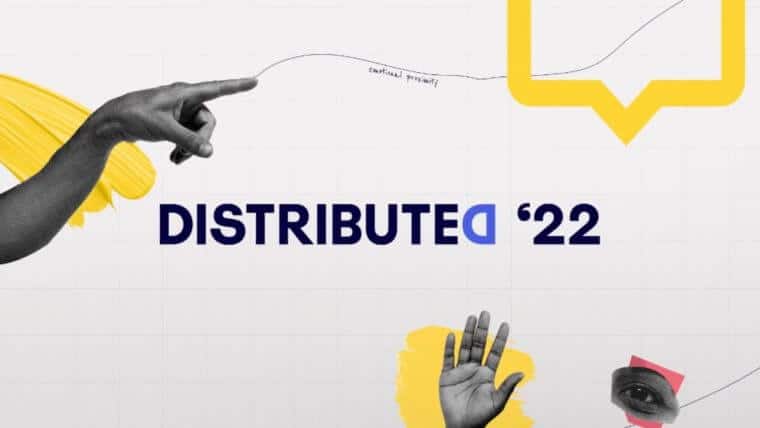The News: Miro held its Distributed ’22 event in San Francisco in recent weeks. At the Distributed ’22 event, the digital whiteboarding platform announced new collaboration capabilities. Of the many enhancements announced, the transition from digital whiteboard to the team content hub for both asynchronous and synchronous work shows the evolution of visual collaboration software. Read more on Miro’s updates from the Distributed ’22 event here.
Miro’s Announcements from Distributed ‘22 – Evolution of a Digital Whiteboard to Team Content Hub
Analyst Take: Miro’s Distributed ‘22 event was an interesting one. While digital whiteboards addressed the immediate needs of organizations through the pandemic, it has quickly become clear that a standalone whiteboard is limited in its ability to accelerate or facilitate productivity. Miro, as a market leader, has recognized this limitation of the technology and has set out to create greater impact on day-to-day workflows through more human ways of working. This translates to a shift in perspective, from a digital whiteboard to a team content hub. To accomplish this goal, Miro announced a new presentation mode, along with asynchronous features to facilitate communication with colleagues.
Within Miro’s latest iteration of presentation mode, a presenter calls ‘attention’, and acts as the guide within the workspace. Users can break off and be recalled to the presenter’s view of the workspace through simple interactions. In addition, the UX/UI for jumping to a specific frame has become very intuitive, making presentations with guests and clients seamless. Meeting attendees are also able to leave reactions, sticky notes and comments within a presentation to increase engagement. These enhancements to the presentation workflows facilitate understanding while decreasing the propensity for an attendee to ‘zone out’.
While enhancements made for presentations covers one workflow, Miro announced features curated to help asynchronous workflows as well. Contributors are now able to create asset-based recordings within a board to convey context and instruction. These asset-based videos can guide a user through the entire board, or simply add detail to a specific asset. To increase productivity, videos can be paused, or sped up, so users can make edits to the content or add comments as feedback. The cumulative effect of these features is a reduced learning curve when joining a colleague’s Miro Board asynchronously.
While many of the announcements made during Distributed ‘22 were feature-based, the cumulative effect of these additions is clear – to evolve from the digital whiteboard for note capture, to a project facilitator acting as the glue between team meetings. This focus on end-to-end project workflow is quickly becoming a high priority as online meeting vendors bundle perpetual digital whiteboards into enterprise licensing. By evolving beyond the digital whiteboard, I see Miro taking steps to very clearly differentiate itself among a growing number of competitors.
Disclosure: Futurum Research is a research and advisory firm that engages or has engaged in research, analysis, and advisory services with many technology companies, including those mentioned in this article. The author does not hold any equity positions with any company mentioned in this article.
Analysis and opinions expressed herein are specific to the analyst individually and data and other information that might have been provided for validation, not those of Futurum Research as a whole.
Other insights from Wainhouse Research:
Crestron Announces the AirMedia AM-3000 for Digital Signage and Wireless Presentation
Microsoft’s Dominance on Full Display in a Week Full of Industry News
Zoom’s Recently Announced Zoom One Shows the Power of Whiteboard
Image Credit: Miro
The original version of this article was first published on Wainhouse Research.
Author Information
Daniel Root is a Senior Analyst with Wainhouse – A Futurum Group company. His area of expertise is digital workplace and workforce communications technologies and services.






